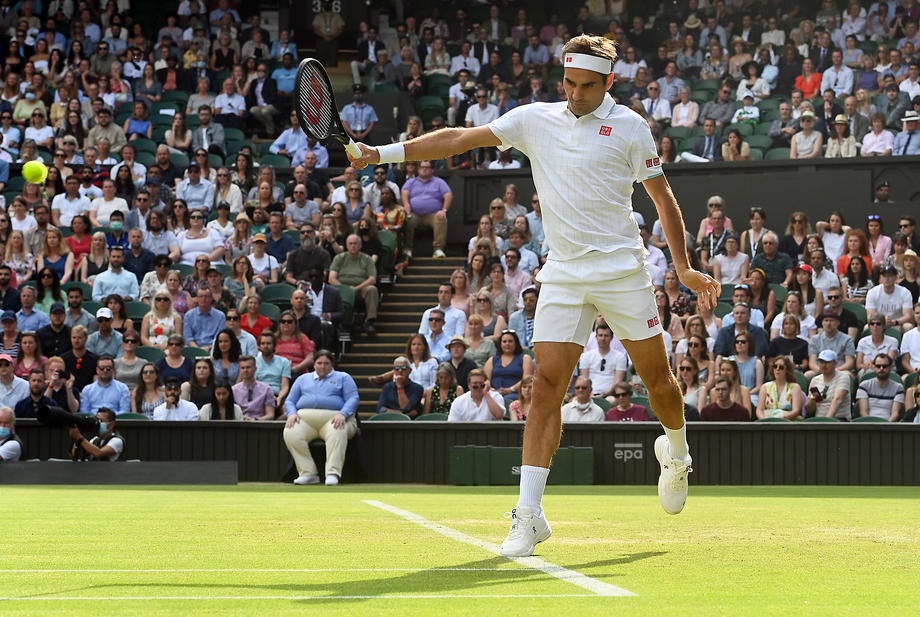- Stars Join Forces for Eisenhower Cup Return to Indian Wells on March 4
- Ken Thomas Broadcasting from Georgia’s Rome Tennis Open
- Solinco Launches All-New Whiteout V2 Racquet
- Stringlet: Serving Up Tennis Inspiration With A Twist
- Davis Cup qualifying to feature Brazil vs. France and Spain vs. Switzerland
- 2025 US Open Expands to Sunday Start
- Tennis Channel To Broadcast U.S. Davis Cup Qualifier vs. Tawain
- Stefanos Tsitsipas Receives Rotterdam Wild Card From Richard Krajicek
- Tien and Basavareddy to Play Delray Beach Open Qualifying
- Australian Open Tennis 2025 Ends with Madison Keys and Jannick Sinner As Winners By Alix Ramsay
- 2025 Australian Open Final Draws
- Jannik Sinner Sweeps Alexander Zverev for Second Straight Australian Open Title
- Ricky’s pick for the Australian Open final: Sinner vs. Zverev
- Australian Open Draws and Order Of Play for Sunday, January 26, 2025
- Madison Keys Upsets Defending Champion Aryna Sabalenka in Australian Open Final Thriller
10sBalls | Tennis Looks At the Ladies Finalists • Sophia Kenin Beats Garbine Muguruza • AO2020
- Updated: February 1, 2020
By Alix Ramsay
It was less than an hour before the Australian Open women’s final but, somehow, our heart was not in it. Sophia Kenin against Garbine Muguruza? Fair enough, Melbourne will have a new name to put on the cup but, to be honest, we weren’t really bothered which one it was.
The problem was that nobody knew much about either finalist. We knew about their results, we knew how they played but we knew next to nothing about what makes them tick. Kenin is young yet – she is just 21 – so there is time to get to know her but if the last couple of weeks are anything to go by, there may be little to learn.
A battler on the court, a real prize fighter of a competitor who deserved everything that went with her 4-6, 6-2, 6-2 victory on Saturday night. She is not just aggressive on court, she is positively terrifying and she simply would not let Muguruza take the title away from her. But for all that self-belief and confidence, she gives nothing away in her press conferences. She was “grateful” for the chance to play in a major final, it had been her “dream” for as long as she could remember and her win was all the result of “hard work”. So far, so standard.

Then there is Muguruza. A French Open champion in 2016 and a Wimbledon champion in 2017, when she hits a hot streak, she can play like a dream and can have the beating of anybody. She also looks like a model. And before anyone starts waving placards saying that is sexist, it is not meant to be. A picture of a good looking woman – or man, for that matter – doing what they do best sells a story: newspapers like to splash the photo across the back page, magazines like to put it on the front cover and television stations like to show it on the 10 o’clock news. It is just a fact of life. And Garbine scrubs up well.
But Garbine also says nothing. She is guarded and aloof in press conferences and no matter whether she has won or lost, no matter how incisive or fluffy the question, she offers absolutely nothing.
Now, every player is free to act as they please but they cannot have it both ways: if you work with the media, you tend to get a good write up. From there, you build a public image and that, in turn, earns you money. But if you make an enemy of the media, it can all go horribly wrong very, very quickly.

Compare, for example, the public images of two of Australia’s tennis successes: Leyton Hewitt and Dylan Alcott. Hewitt is respected by Australians – he is the typical Aussie legend, all blood and guts and doing it all for the green and gold – but for all that he is a former US Open and Wimbledon champion and a former world No.1, the only endorsement contract anyone can remember him signing was for lavatory paper.
Antagonistic towards the press – even to this day – he snarled in public and got a reputation for being as approachable as a cut tiger snake. As a result, the champion that Australia had been waiting for for so many years is worth around $20million. That’s decent money for we mere mortals but it is chicken feed in the world of professional sport.
Alcott, by contrast, is God’s gift to the media- he never shuts up. He won his sixth quad wheelchair singles title in Melbourne on Saturday, beating Andy Lapthorne from Britain, 6-0, 6-4. But he is also a radio host, a basketball player, a motivational speak and a celebrity. Thanks to an ANZ advert on TV, he has become the “ubiquitous” Dylan Alcott and will never struggle for work or income again. The wheelchair player is the celebrity; the former World No.1 is a small, blond bloke who used to be somebody once.
The master of the press conference is, of course, Roger Federer (he is master of most things in life). Over the course of his career, he has spent countless hours talking to the written press, radio and TV and doing it in three languages. And, over all that time, he has learned how to make the time work to his advantage.
“I think talking in different languages is always an interesting thing,” he said. “So that’s challenging for me, trying to get the sentences right, to be quite honest. Swiss German it’s simple. It’s where I feel most comfortable, clearly.
“But I kind of grew up with it a little bit, so I know how to handle it now and also take joy out of it. I think it is important. I try to see the press as sort of a bridge. Hopefully it’s a good story for the people who read it or are watching it on TV, that they think, I don’t know, tennis is a great sport, it’s actually interesting. I’m giving them maybe more than just like, ‘my forehand worked well, the second serve I have to improve’. You walk away. That was boring. I always try to give it a little bit something extra.
“I’ve maybe said a few too many things sometimes, but I try to be honest. For the most part, you know, it’s served me well. I’ve always tried to remain myself as well. It’s always been a challenge not to change over time but adapt to the new situation of being higher ranked, being asked interesting questions over the years.
“I know you guys have a job to do. I also have to do it. I felt like sometimes we overdo it. Too many press conferences after every single game. If there’s a better story than me winning a match 6-2, 6-2 in the first round at some tournament, I think that deserves the credit, not maybe my match. I get it. They have to put me in front of the press. I just go with it.”
The German press have certainly noticed the ‘Federer-effect’ on Sascha Zverev. The beaten semi-finalist has never had an easy relationship with his home media and, in the past, when he has lost, he has been grumpy, rude and monosyllabic. But he spent part of the winter break on tour with Federer playing exhibition matches around South America. Yet this past fortnight in Melbourne, he has been charming, helpful and willing to answer any question – even after he had lost to Dominic Thiem. In short, he is a new man and Germany loves him for it.
“I feel [a lot of players] fearful of you guys [the media] just because they feel they have been misinterpreted in the past,” Federer said. “I felt that in the very beginning of my career.
“Very quickly as a player, if you get a certain personality, you get put in a certain drawer. He’s the funny guy, he’s the serious guy, he’s the boring guy, whatever. You fight with that for quite a long period of time.
“That power of the microphone is a funny thing. Some players I think struggle with it. I would like to see more players just being really themselves in front of the press, being more relaxed about it, not worrying so much about making mistakes.
“You guys know not every word should be twisted. You know maybe how he meant it, don’t make him pay so badly for a mistake. You’d rather see that than robots left, right and centre. I feel like sometimes some players have gotten a little bit too robot like. I wish they would let loose and be themselves. I try to always do that. It’s not always easy, but I try hard.”
By being himself in front of the mic, Federer has established himself as a global brand worth around $450million. Of course, winning 20 grand slam titles helps considerably in creating that brand and generating that wealth but Pete Sampras won 14 grand slam titles in his time and yet he could walk into a grocery store in most towns and not be recognised. His bank balance groans under the weight of around $150 million but it is a pittance by Federer’s standards. Then again, Pete never had much to say and once he retired, he had nothing much to give back to the sport.
As Kenin and Muguruza sorted out their differences in the Rod Laver Arena, it was hard to ignore the feeling that this was a huge opportunity just begging to be taken. Unfortunately, neither of them has ever showed any inclination to grab it.

🎾🎾🎾






